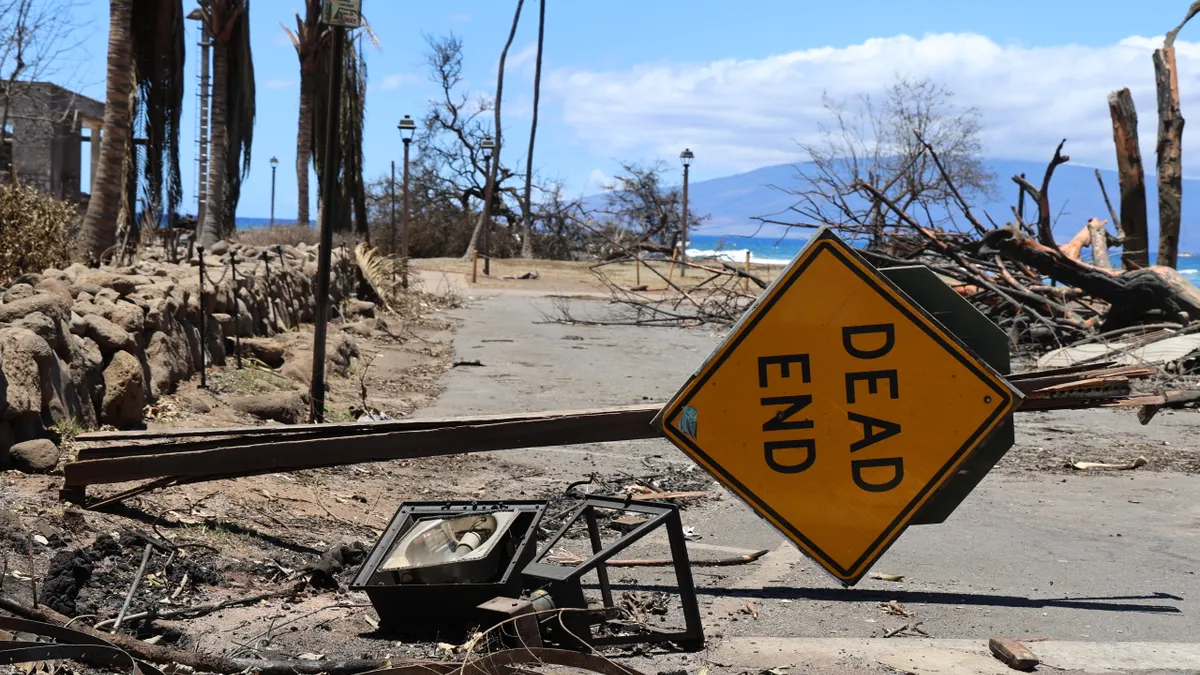Dive Brief:
- Hawaiian Electric faces financial and cost recovery risks tied to the devastating wildfires in Maui, which have led to at least 99 fatalities and affected more than 2,200 structures, according to a report issued by Moody’s Investors Service Monday. S&P Global on Tuesday downgraded to junk status the debt of the utility’s parent company, Hawaiian Electric Industries.
- This week, law firm Singleton Schreiber filed a lawsuit against the company alleging that its power lines ignited the fire, and that Hawaiian Electric was warned of the threat of wildfires early last week, but did not effectively de-energize their power lines to reduce that risk.
- Hawaiian Electric does not comment on pending litigation, utility spokesperson Darren Pai said in an email. “Our immediate focus is on supporting emergency response efforts on Maui and restoring power for our customers and communities as quickly as possible. At this early stage, the cause of the fire has not been determined and we will work with the state and county as they conduct their review,” Pai added.
Dive Insight:
The wildfires in Maui began last week and as of Tuesday, had led to 99 confirmed fatalities. State officials are still investigating the origin of the fire and that process could take up to months to complete, Moody’s noted. However, Hawaiian Electric last week reported several instances of downed utility poles and power lines in Maui, and the lawsuit filed against it points to “poorly made decisions” by the utility.
In terms of financial risk, one significant difference between Hawaii and California is that the former does not apply the legal doctrine of inverse condemnation to utilities. This policy would consider them liable for damages caused by their equipment whether or not they were found to be at fault for it. However, the utility could still be found to have been negligent as investigations into the fires unfold, Moody’s said.
Like most utilities, Hawaiian Electric doesn’t maintain insurance for most of its transmission and distribution system so will need to recover costs related to the fire through regulatory support from the Hawaii Public Utilities Commission, according to Moody’s. There is some precedent for such financing, as the state in 2014 issued securitization bonds to fund green infrastructure projects.
California utilities have been implementing billions of dollars worth of wildfire prevention measures in their service territories in the last few years, after fires caused by its power lines pushed Northern California utility Pacific Gas & Electric into bankruptcy in 2019. One of these measures includes “public safety power shut offs” – pre-emptive outages when weather conditions increase the risk of fire. Utilities in Nevada and Oregon also employ this tactic, but Hawaiian Electric does not have such a program, according to Moody’s.
“As a result, the utility’s power lines remained energized when they were hit by the high winds and fires last week,” the report noted.
The lawsuit filed by Singleton Schreiber in the Second Circuit Court of State of Hawaii, District of Lahaina contended that Hawaiian Electric knew that de-energizing power lines is a proven method to prevent wildfires, but “they either left their powerlines energized or, after [de-energizing] them, re-energized them too soon.”
The lawsuit also pointed to other alleged issues with Hawaiian Electric’s system and processes, including that it had exposed power lines in vegetated areas, didn’t properly maintain tension in the lines to prevent them from sagging, and didn’t properly implement vegetation management programs.
“Had these utility companies handled their equipment properly, the people of Lahaina would have been better prepped and prepared to escape the flames,” Paul Starita, Singleton Schreiber’s lead Hawaii attorney, said in a statement.
Hawaiian Electric Industries’ stock was trading at about $16 per share Wednesday morning, down about 56% since the fires began.














